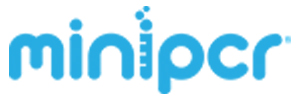Use the CRISPR/Cas9 system in vitro to cut DNA in a tube and analyse the results with gel electrophoresis.
Investigate how the Cas9 nuclease can be programmed to target virtually any DNA sequence—just by changing the guide RNA.
The introduction of CRISPR/Cas into the biotechnology toolkit has revolutionised gene targeting and gene editing.
In this lab, students will use the CRISPR/Cas system in vitro (in a test tube) to analyse the function of its molecular components.
They will use two different guide RNAs to direct Cas9 nuclease to cut a DNA sample at two different locations and then analyse their resulting DNA fragments using gel electrophoresis.
This gene targeting lab will allow students to investigate how the Cas9 nuclease can be programmed to target virtually any DNA sequence—just by changing the guide RNA.
This activity will demonstrate how the CRISPR/Cas system is both programmable and specific and why it is such a powerful genome editing tool.
- Techniques: Micropipetting, gene targeting, gel electrophoresis
- Topics: Genome editing, biotechnology, CRISPR/Cas9
- Time required: Two 45-min class periods or one 90-min block
- Level: General high school through college
Kit includes:
This lab provides enough reagents for eight lab groups:
- Nuclease-Free Water
- Reaction Buffer
- Cas9 Nuclease
- Guide RNAs (gRNA1 and gRNA2)
- DNA Sample
- Proteinase K Solution (including loading dye)
- Fast DNA Ladder 3
IMPORTANT storage notes:
- The CHOPPED! reagents will be shipped overnight on ice and will need to be stored in the freezer immediately upon arrival.
- We strongly recommend storing the reagents in the coldest part of the freezer where temperature fluctuations are minimal (e.g., in the back of the freezer instead of the freezer door).
- The Cas9 Nuclease has greater stability when stored at higher concentrations.
- For this reason, you will need to dilute the enzyme shortly before use. See the Instructor’s Guide for more details.
- Reagents are stable for 12 months when stored according to these recommendations.
Required equipment and reagents, not included in kit:
- Micropipettes and tips
- 37 °C heat source (e.g., incubator, water bath, or heat block)
- Gel electrophoresis and fluorescence visualisation system
- Optional: Vortex and microcentrifuge
- Agarose (electrophoresis grade)
- DNA stain
- Gel electrophoresis buffer (TBE)
- Micro-Centrifuge Tubes
- PCR tubes










